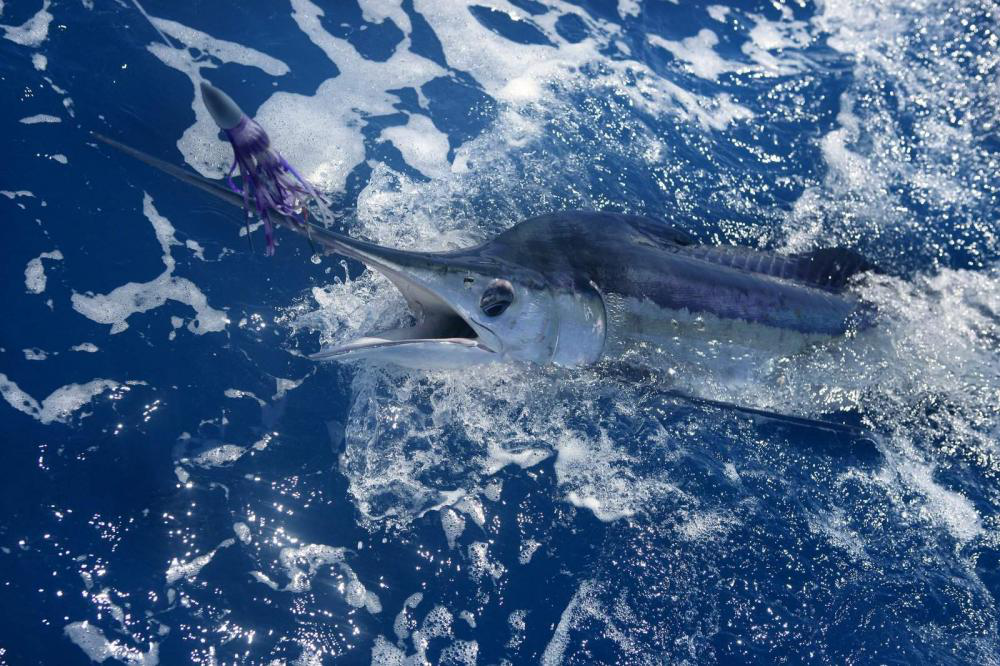Know your marlins for your Cabo San Lucas deep sea sport fishing trip…
Cabo San Lucas is known as the “Marlin Capital” of the world. Here, you’ll find all species of marlins, including Blue Marlin, Black Marlin, White Marlin and Striped Marlin.
What makes these marlins different from one another?
Let’s take a quick look.
Blue Marlin
Blue marlins have a cobalt blue colored back that fades to white. They have a sleek body, a pointed front dorsal fin, and side fins that can be folded back. The overall shape of their body is cylindrical.
Blue marlins are extremely powerful and known to put up quite a fight. They can run hard, they can travel long, and they display amazing acrobatics when they rise up in the air.
They like warm and tropical waters. They are a highly prized deep sea sporting fish.
Black Marlin
Next we have, black marlin.
Black marlins are the largest fish in the marlin family. They can reach to 16 ft. in body length and can weigh as much as 1600 lb.
Because of their huge size and weight, they are referred to as “the bulls of the sea.”
Black marlins have a dark blue colored back that fades to silvery white. Compared to blue marlins, they have a low front dorsal fin. Their side fins are rigid and can’t be folded back.
White Marlin
White marlins are the smallest marlin species. They can max to 10 ft. in length and 220 lb. in weight. They are colored brown, gray or blue-green on the back and silver towards the belly.
A white marlin has a rounded dorsal fin and spots on its underside. It can leap quite high in the air and hunts its prey by overtaking, rather than stunning or slashing it with the bill.
Striped Marlin
Last, but not least we have striped marlin.
Striped marlins can swim at a whopping 50 miles per hour, which makes them the second fastest fish in the world, just behind sailfish. They prefer to live in colder waters and can grow to about 14 ft in length.
A striped marlin has distinguishable white or pale-blue vertical stripes on its side, which is where the fish gets its name from, and pointed pectoral, dorsal and anal fins.
Interested in learning more about marlin fishing in Cabo San Lucas? Contact Tag Cabo Sportfishing today.

